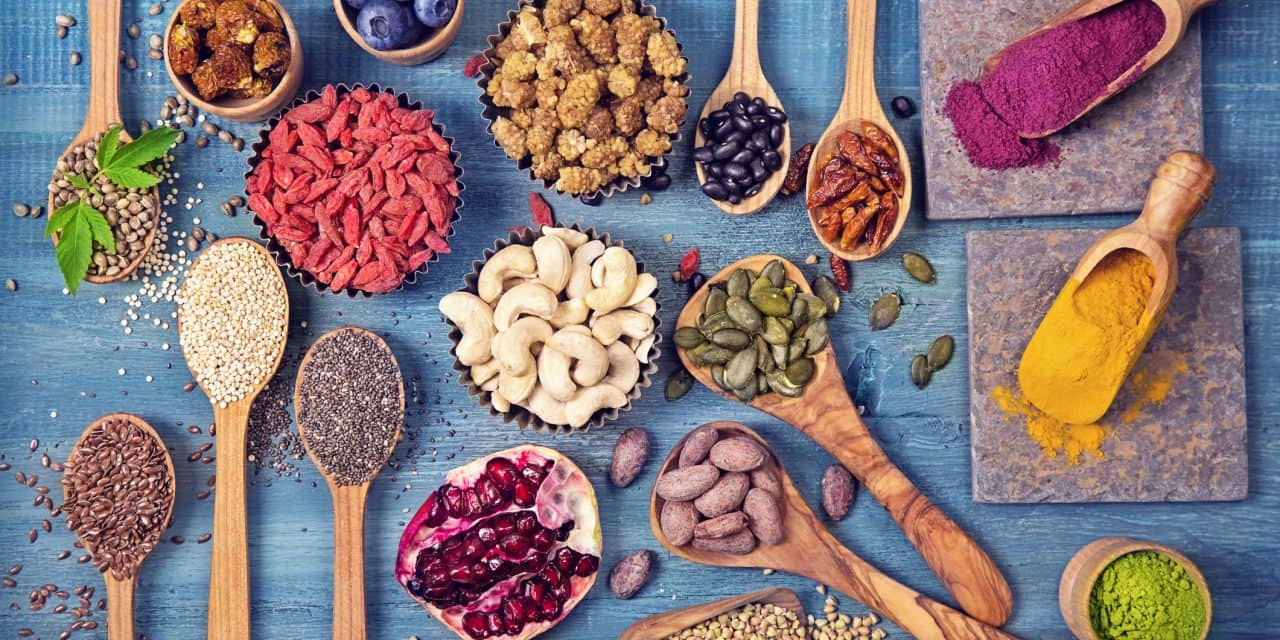Follow the rainbow
All plant products (fruit, vegetables, nuts, grains, legumes and seeds) contain a number of chemicals, called phytochemicals, some of which have beneficial properties for health and aging.
The actions of these phytochemicals are becoming clearer as research into nutritional health increases.
However, plants are more than the sum of their known phytonutrients. Individually, none of these components can wholly explain the benefits we receive from eating five serves of fruit and vegetables per day.
A good diet beats a handful of tablets every time. This is not only because of the different elements in food and the attention and commitment to a dietary regimen, but because it is more tasty and probably cheaper too. And most of all, because it works, and has for centuries.
Rather than only looking for lycopenes or favoring flavonoids, a simple way to make sure we access all the phytochemicals we need is to ‘follow the rainbow’.
Look to fill your diet with a variety of bright colors every day:
- Red – lycopenes and ellagic acid (tomatoes and watermelon)
- Orange and deep yellow – high in beta-carotene. The darker the color, the more beta-carotene (pumpkin, carrot, sweet potato, spinach, kale, red pepper, and pawpaw)
- Dark green – lutein and zeaxanthin (kale, spinach and collard greens)
- Blue, purple and dark red – flavonoids (berries)
- Green, white and purple – high in sulphurous phytochemicals (cruciferous vegetables, and the same colors in legumes indicate lignins)
Many of us get into the habit of eating the same foods – day in, day out. If you routinely find yourself eating iceberg lettuce, try some new varieties, such as rocket or baby spinach. Instead of potato, try a different color – maybe sweet potato or pumpkin.
It turns out that variety is the spice of life, and the more colors the better.
Types of phytochemicals
| Phytochemicals | What are they good for? | Where can I get them? | How much? How do I prepare them? |
| Flavonoid: Anthrocyanidins, especially Cyanidin | Very strong antioxidants, improve insulin sensitivity, anti-inflammatory in arthritis, protect against skin cancer from UV radiation | The skins of red-colored berries, apples, pears, peaches, plums, dark chocolate | 1 serve of 1 of these fruits daily. 30g of good quality dark chocolate regularly |
| Yellow flavonoid: Luteolin (a flavone) | Anti-inflammatory, anti-cancer, anti-allergenic, helps promote healthy glucose levels, reduces risk of cataracts and colon cancer | Celery, green peppers, parsley, artichoke leaves, olive oil, rosemary, lemons, sage, peppermint, thyme | Mix all these greens in a salad and eat most days. Cook artichokes in water for 30 mins, cool, then mix oil/lemon vinaigrette. Pull off the leaves, dip and eat |
| Flavonoid: Catechins | Anti-aging, anti-inflammatory, protects against cancer, skin cancer and atherosclerosis | Tea (particularly green and white), chocolate, grapes, berries, apples | Drink green tea daily. 1 serve of these fruits daily. 30g of good quality dark chocolate regularly |
| Flavonoid: Quercetin | Anti-allergy, anti-inflammatory, protects against cancer, prostatitis, asthma and bronchitis | Yellow onions, scallions, kale, broccoli, apples, berries, tea | Red apples eaten with the skin are best – ‘an apple a day’ |
| Tetraterpene: Lycopene (a red carotenoid) | Anti-inflammatory, acts against cell damage | Tomato (raw, paste, sauce, puree, soup), watermelon, pink grapefruit, baked beans | Tomatoes cooked with skins and some fat 3 times per week. 1/2 cup of these fruits 3 times per week |
| Isoflavones: Daidzein and Genistein | Relieves menopausal symptoms, inhibits arteriosclerosis, protects prostate from cancer and enlargement, prevents osteoporosis | Soy – beans, tempeh, miso, tofu, soy milk, soy yoghurt | Soy copes with processing so get your 1/2 cup from cooked, tinned or packaged soy products 3 times per week |
| Isothiocyanateprecursors: Glucosinolates | Anti-tumor, anti-cancer, supports liver detoxification pathways | Bok choy, broccoli, Brussels sprouts, cabbage, cauliflower, horseradish, kale, kohlrabi, mustard, radish, rutabaga, turnip, watercress | 2 serves per day from this list. Cook, but only ever so lightly – steam or a quick stir-fry |
| Stilbene: Resveratrol | Anti-inflammatory, anti-arteriosclerotic, anti-cancer and anti-aging actions. (These findings not in humans, but the research is promising) | Grapes, wine, grape juice, peanuts, berries of Vaccinum species (blueberries, bilberries, cranberries) | Red wine/grape juice – 4 glasses a week. 1 serve per day of any of the berries. 20 peanuts 3 times per week |
| Tetraterpenes: Beta-carotene (orange carotenoid) | Protects against cancer, antioxidant, anti-aging, prevents vitamin A deficiency | Pumpkin, carrot, sweet potato, spinach, kale, red pepper, pawpaw | 1 cup of root vegetables – cut, stir-fried and cooked with oil. Fruit is always best raw every day |
| Lignans: Enterdiol | Protects against breast cancer, promotes ovulation, reduces pre/peri-menopausal symptoms, decreases insulin resistance, lowers cholesterol | Linseeds (flax) and sesame seeds | 1 tablespoon of flax oil per day, or add ground flax to any meal. Sprinkle sesame seeds or spoon tahini on salads |
Last reviewed 02/June/2017
Editor
Latest posts by Editor (see all)
- Oily fish and diabetes prevention - 04/06/20
- Manage the andropause - 11/12/17
- Testing testosterone levels - 07/12/17






